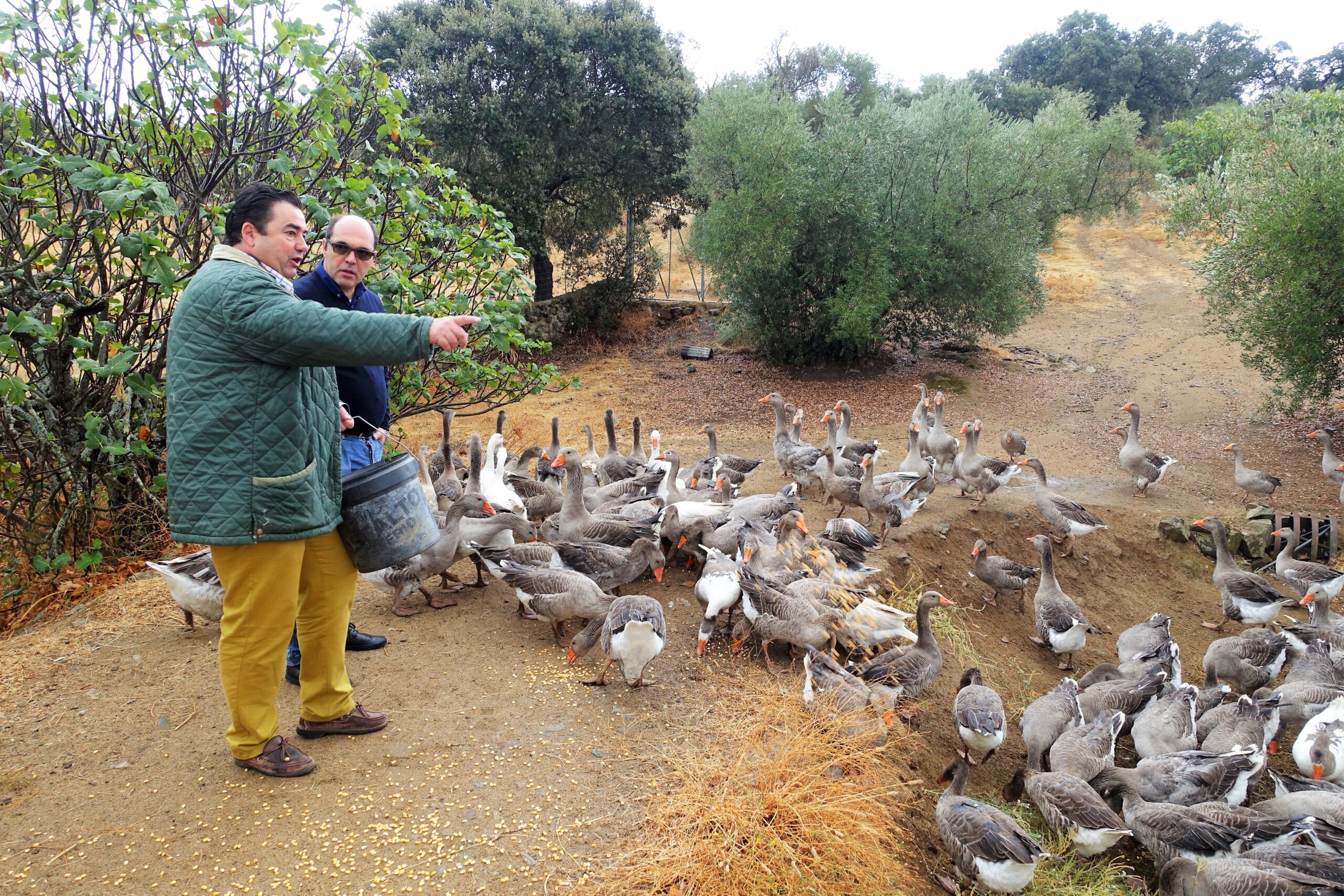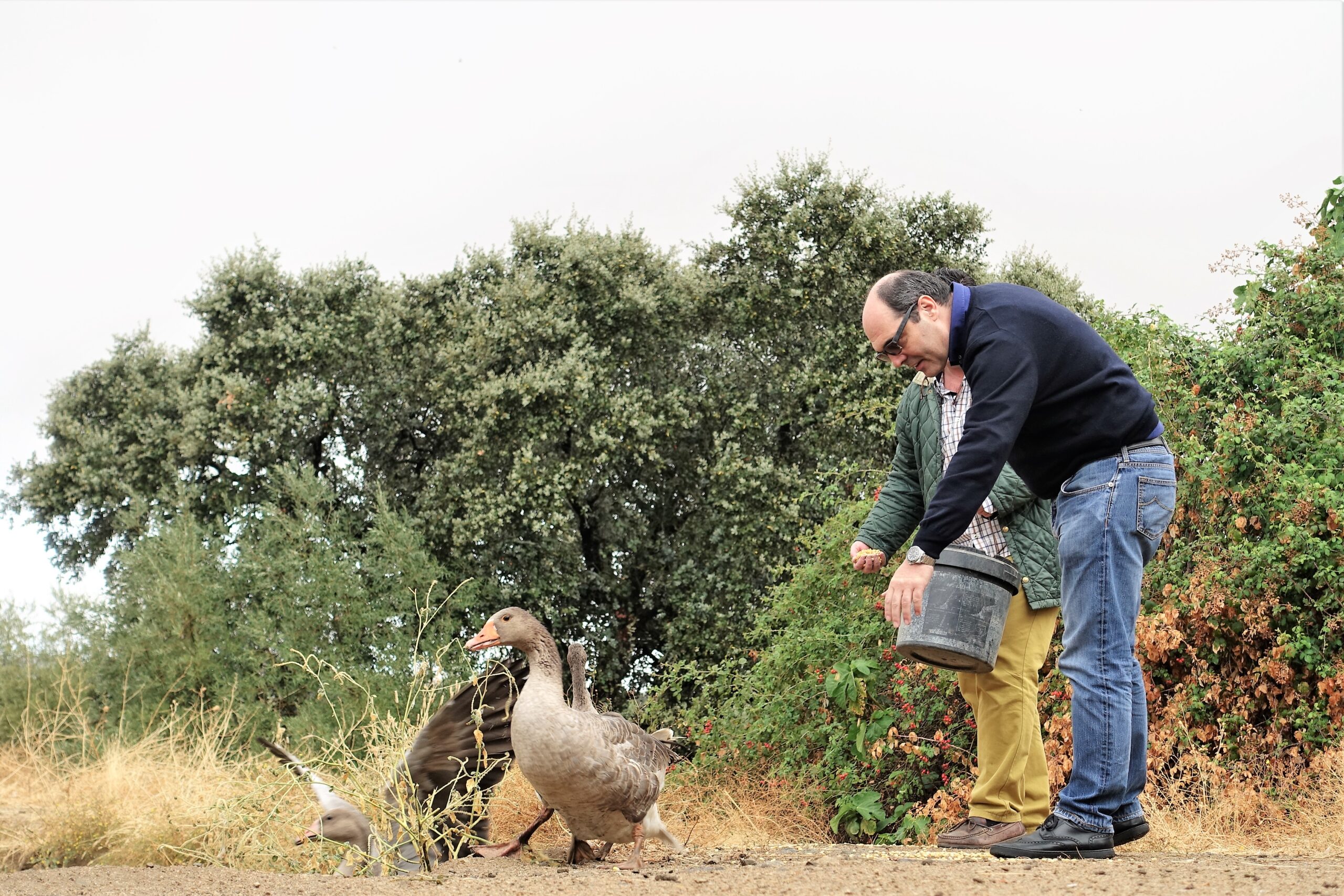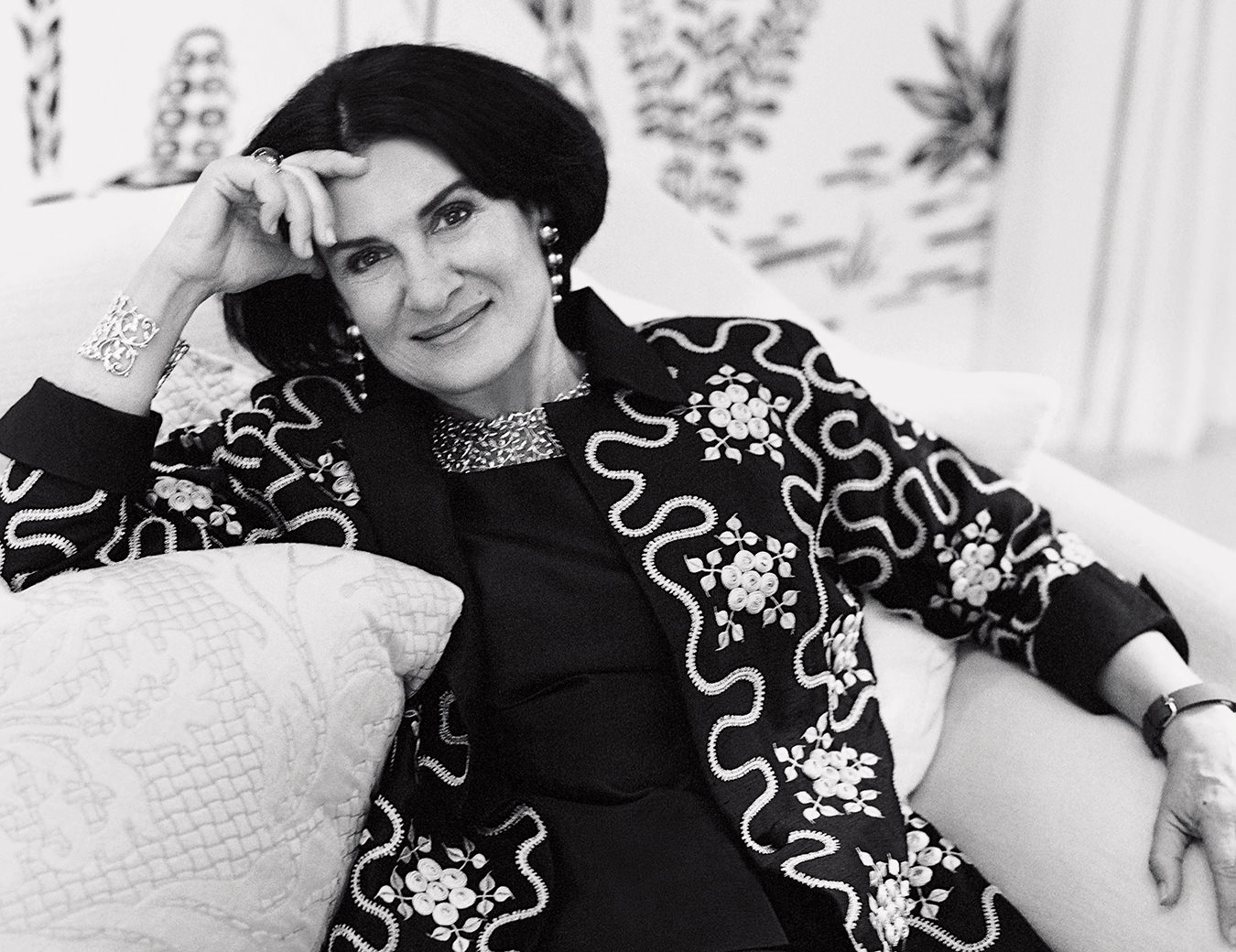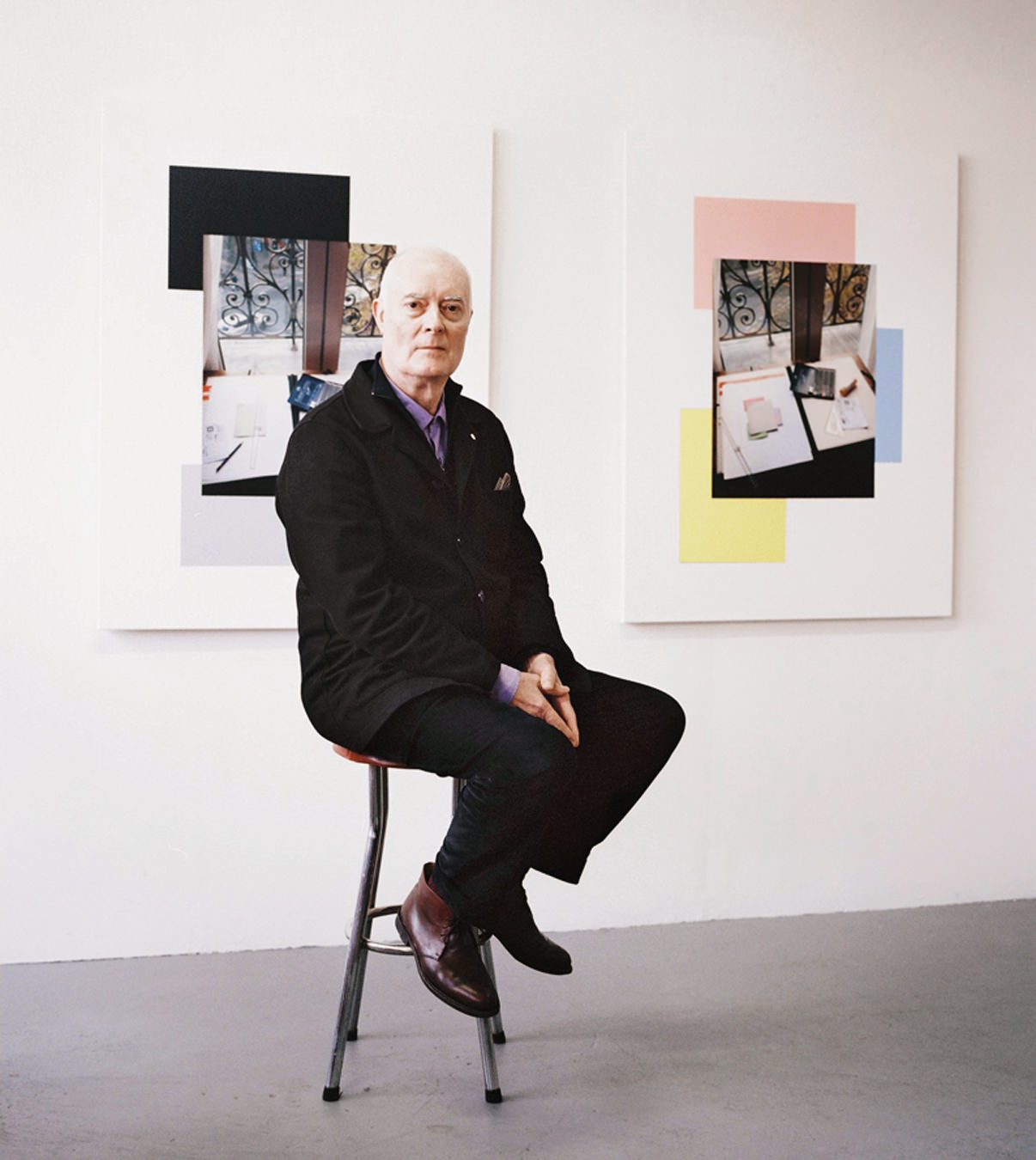Cruelty-free Foie Gras From a Spanish Family’s Farm
Foie gras is often seen as a wicked indulgence, even among foodies and chefs. Controversial because of its preparation, foie gras can be made only through the traditional French technique gavage, where ducks are force-fed and fattened up to produce fatty livers—crucial when making creamy foie gras.
Or so we thought.
Despite foie gras being strongly associated with French cuisine, a Spanish farmer by the name of Eduardo Sousa is proudly producing sustainable and humane foie gras. Located southwest of Madrid toward Badajoz, Sousa’s farm is one of a few producers in the world making natural foie gras. Rather than force-feeding his birds, Sousa uses a tradition he says dates back more than 500 years.

Chef Ettore Bochia and Sousa with the geese.
According to the fifth-generation farmer, force-feeding is unnecessary because of a duck’s natural instinct and way of life, which relies on wild geese feeding themselves excessively on acorns and olives on the Sousa farm as they plan for their winter migration. A goose in its natural environment generates its own reserves of fat, and this makes their liver fatty, a process Sousa relies on to produce his natural foie gras.
But just how accessible is Sousa’s naturally produced foie gras, and what is the price for this prize-winning delicacy? On the website of La Patería de Sousa, a 180-gram jar of foie gras sells for 199 euros and comes with a long waiting list since it is produced once a year from Sousa’s geese to allow for natural repopulation of his flock in what the farmer describes as “what nature allows.” You really cannot rush Mother Nature.

Chef Ettore Bochia interacts with geese on Sousa’s now-famous Spanish farm.
Desperate gourmets can be strategic and join a farm visit with Sousa for a mere 500 euros, which includes a small tasting session, but rather than walking knee deep in mud and being, there are a \handful of restaurants where you can find Sousa’s foie gras despite his refusal to work with chefs who don’t deserve his product, as he told U.S. chef and conservationist Dan Barber.
For executive chef Ettore Bocchia of Italy’s Grand Hotel Villa Serbelloni, food sustainability has always been at the forefront of his cuisine and was the reason Sousa agreed to supply foie gras to his Michelin-starred restaurant, Mistral.
“Food sustainability for me is the possibility of finding top-level products which have strong ethics and don’t exploit the environment,” says the chef known for Italian molecular gastronomy. “My team at Restaurant Mistral have seen this in the family-run producers we support and the way the breeders approach their production.”
He adds, “It took me two years to get a phone call [with Sousa], and after being very insistent—actually quite intrusive—I finally managed a reply and went to Mr. Sousa’s house. After I tasted his foie gras, I understood we were tasting a very special foie gras, and I had to have it at my Restaurant Mistral, not only because of the quality but also because of his practice and ethics involved in the production.”
At Villa Serbelloni’s restaurant overlooking Lake Como, Sousa’s foie gras is presented in multiple ways: a crème caramel served in a glass with stravecchio balsamic vinegar, an escalope with green apple cream, a terrine with mango compote, and a filled galantine with Bronte pistachios.
Rich, creamy, and not masked by too much fat, Sousa’s foie gras has spicy undernotes of cloves despite being flavoured with only salt and pepper, flavour the producer believes comes from the acorns and free-roaming lifestyle of the birds.




